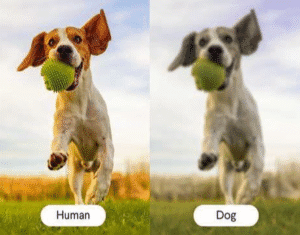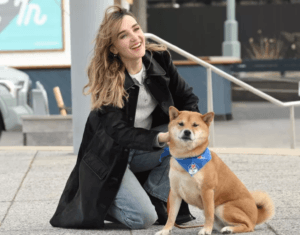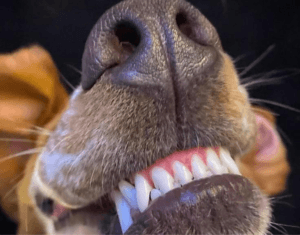Have you ever looked at your dog and wondered what those tail wags, barks, or head tilts really mean? I know I have. Dogs are amazing communicators, but they don’t use words—at least, not in our language.
Learning to speak ‘woof’ is about understanding your dog’s unique body language, vocalizations, and behaviors. It’s not just cute; it’s the key to building a stronger bond with your furry friend. Let me take you into the world of canine communication and help you decode what your dog is trying to tell you.
Table of Contents
I still remember the day Blaze, my beloved husky, greeted me with an unusual whimper and refused his favorite toy. At first, I thought he was just having an off day. Little did I know, Blaze was trying to tell me he wasn’t feeling well. A trip to the vet revealed a stomach issue that could have been serious if left unnoticed. It was a wake-up call for me; dogs are constantly communicating, and it’s up to me to listen.
1. Body Language: The Silent Conversations
Dogs are masters of nonverbal communication. From the tip of their nose to the end of their tail, every movement tells a story. Here’s a quick guide to deciphering common body language signals:
- Tail Wagging: Not all wags are the same! A slow, relaxed wag usually signals happiness, while a stiff, high wag might indicate alertness or agitation.
- Ears: Forward-facing ears mean curiosity or focus, while ears pinned back can signal fear or submission.
- Posture: A relaxed dog will stand naturally or lay comfortably. A tense posture with a stiff body might indicate fear, stress, or aggression.
- Eyes: Soft, blinking eyes show trust and relaxation. On the other hand, wide eyes with whites showing (“whale eye”) can be a sign of anxiety or discomfort.
- Mouth: A slightly open mouth with a relaxed tongue often means your dog is happy. A closed mouth or curled lips might indicate stress or aggression.
2. Vocalizations: Understanding the Woofs and Whines
Dogs have a variety of vocalizations that can mean different things depending on the context. Here are some of the most common sounds:
- Barking: Dogs bark for various reasons; to alert, play, or even out of boredom. Pay attention to the pitch and frequency. High-pitched barks often indicate excitement, while low-pitched barks may signal a warning.
- Whining: This can mean your dog is anxious, excited, or seeking attention. I always try to pay attention to the context. Is it close to dinner time, or are they stuck behind a closed door?
- Growling: Growling isn’t always a bad thing. Play growls are common during tug-of-war, but a deep, guttural growl might indicate discomfort or a warning.
- Howling: Some dogs howl as a response to certain sounds, like sirens, or as a way to communicate over long distances. It’s part of their ancestral wolf heritage.
3. Tail Talk: What That Wag Really Means
Your dog’s tail is like their emotional barometer. Here’s how to read it:
- High and Wagging: Confidence or excitement.
- Low and Wagging: Submission or insecurity.
- Tucked Between Legs: Fear or extreme submission.
- Straight Out and Still: Alertness and focus.
4. Context Is Everything
Understanding your dog’s communication requires looking at the bigger picture. For example, a wagging tail doesn’t always mean happiness, it depends on the position and accompanying signals. Similarly, a bark could mean “Let’s play!” or “Stay away!” depending on the situation.
5. How to Respond to Your Dog’s Signals
Communication is a two-way street. Once I understand my dog’s signals, it’s essential to respond appropriately:
- Reward Positive Behavior: When my dog communicates calmly or follows commands, I reinforce the behavior with praise or treats.
- Respect Their Boundaries: If my dog shows signs of stress or discomfort, I give them space and avoid forcing interactions.
- Use Clear Signals: Dogs thrive on consistency. I use clear commands and body language to communicate with them effectively.
6. The Power of Training
Training isn’t just about teaching commands, it’s a way to strengthen my communication. Positive reinforcement methods help my dog associate good behavior with rewards, making it easier for both of us to understand each other.
7. Building Your Own ‘Woof’ Vocabulary
Over time, I started to recognize Blaze’s unique ways of communicating. Maybe he nudges my hand when he wants attention or brings me a toy when he’s ready to play. I pay attention to these cues and respond consistently to build a language that works for both of us.
Key Takeaways
- Dogs communicate through body language, vocalizations, and behavior.
- Body language is crucial: Tail wags, ear positions, posture, and eyes reveal emotions.
- Vocal cues matter: Barks, whines, growls, and howls each have different meanings based on context.
- Tail movement isn’t always happy: Position and stiffness indicate excitement, fear, or submission.
- Context is key: A single signal doesn’t tell the full story; look at the overall situation.
- Respond appropriately: Reward calm behavior, respect boundaries, and use clear, consistent signals.
- Training strengthens communication: Positive reinforcement helps create a shared understanding.
- Every dog has a unique ‘language’: Observing and responding consistently builds trust.
- Listening deepens your bond: Understanding your dog makes them feel heard and strengthens your connection.
Conclusion:
Learning to speak ‘woof’ has been one of the most rewarding parts of being a dog owner for me. It’s about more than just understanding my dog’s needs, it’s about forming a deeper connection. The more I observe and listen, the better I become at interpreting their unique language. And trust me, my dog definitely notices and appreciates the effort.
So, the next time your dog barks, wags, or tilts their head, remember—they’re talking to you. All you have to do is listen. Happy ‘woof’ speaking!
Do you have a funny or heartwarming story about understanding your dog’s unique way of communicating? I’d love to hear about the moments that made you say, “Now I get it!” Share it in the comments!





